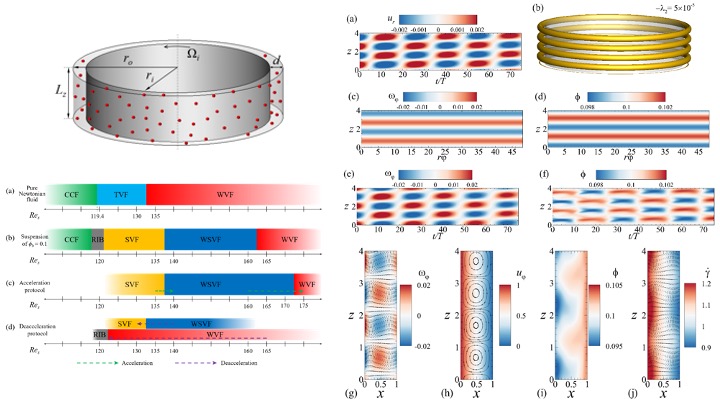A deeper understanding of flow dynamics in particle-laden fluids

Understanding and predicting the flow of particles in fluids is incredibly valuable in the science community as they are used in the natural world and technological applications.
To gain a better understanding of these behaviors, Parisa Mirbod, associate professor in Mechanical and Industrial Engineering and director of the Mirbod Lab at UIC, has partnered with Michael Schatz of Georgia Institute of Technology and Changwoo Kang of Jeonbuk National University to examine the paradigm problem of flow between concentric rotating cylinders, the so-called Taylor-Couette flow.
The results of their research were recently published in the journal Advancing Physics (Physical Review Fluids) under the title “Hysteresis and ribbons in Taylor-Couette flow of a semidilute noncolloidal suspension.”
The study of dispersed particle flows, also known as suspensions, and particle migration in Taylor-Couette systems has amassed momentous interest due to their relevance in various engineering applications. The transitions in flow behavior induced by neutrally buoyant particles suspended in a fluid have been investigated through experimental and numerical studies in Taylor-Couette flow, which involves a rotating inner cylinder and a stationary outer cylinder.
“This is particularly important as the characteristics of different flow states play a crucial role in designing efficient industrial applications, e.g., chemical mixers and bioreactors,” Mirbod said. “The controlled mixing and aggregation conditions within suspensions in geometries akin to Taylor-Couette systems can be leveraged to enhance performance in process technology and biotechnology applications.”
Understanding and controlling these transitions are essential for making the best use of the processes in different industries, including pharmaceuticals, food processing, and environmental engineering.
Past experiments revealed two unique observations. The researchers noted that “flow states of fluids with particles displayed ‘hysteresis’ – that is, different fluid/particle states can be observed, depending on the history of how those final conditions were prepared.” Hysteresis is a lag between input and output in a system when there is a direction change. They also noted the appearance of a previously unidentified fluid/particle flow pattern termed “ribbons.”
The team used computer simulations to uncover key mechanisms that helped explain what they gathered from the experiments.
“Our results not only deepen our understanding of flow dynamics in particle-laden fluids but also open up new possibilities for optimizing the performance of various industrial applications, leading to more efficient and effective processes,” Mirbod said. “By gaining insights into the complex interplay between fluid dynamics and particle behavior, we aim to provide valuable guidance for the design and optimization of industrial processes involving suspension flows.”